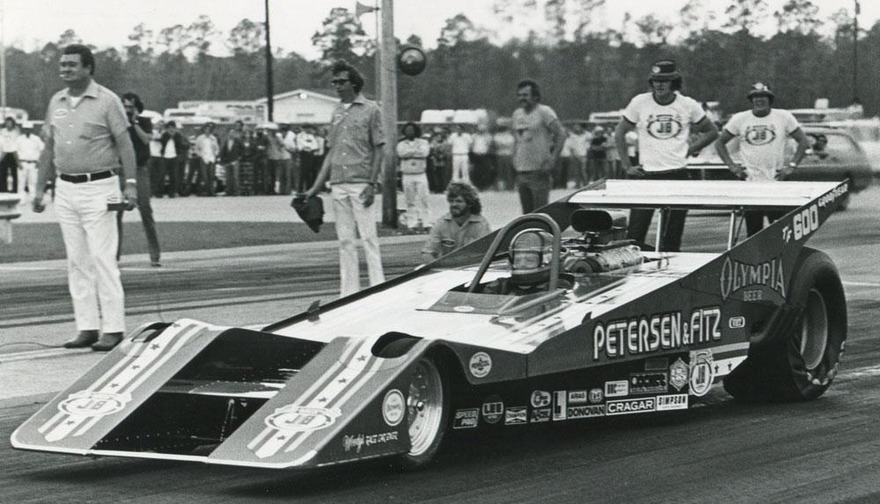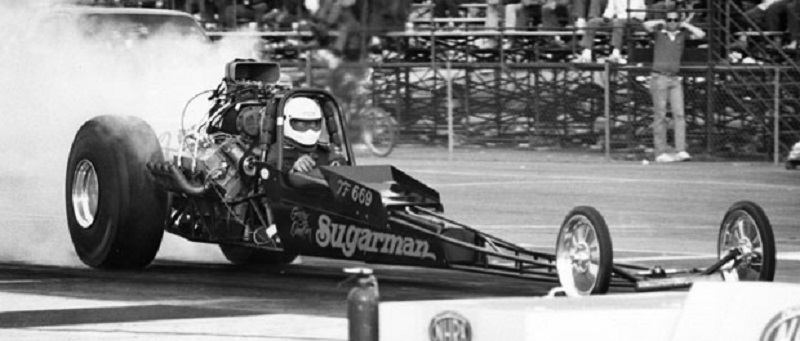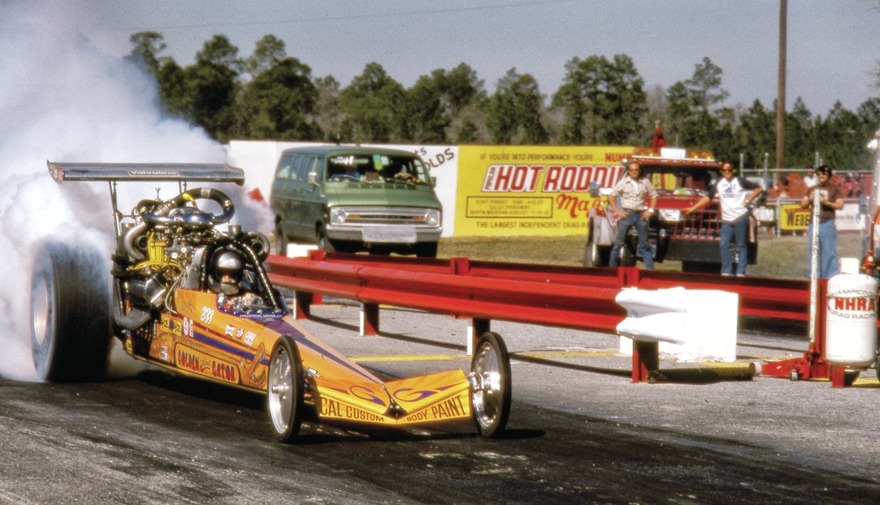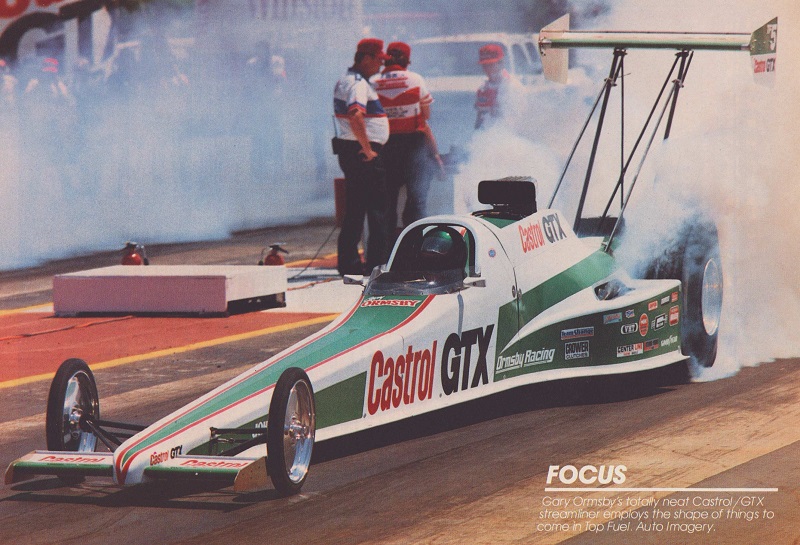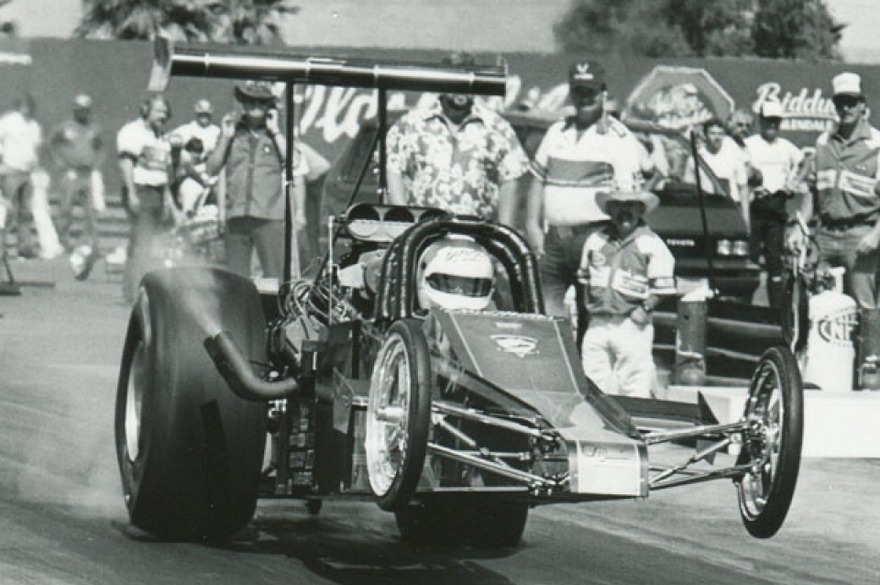For some it even happened, but most of these experiments, rattling the dustbin of history, not lived up to their expectations. Anyway, if I did not like upstarts, the history of the races on the quarter-mile would be as dreary as a «Formula 1» in the second half of zero.
Craig Breedlove, has repeatedly distinguished himself by his record run on the salt lakes, one day decided to try his luck in drag racing and built Spirit II, with the creation of which used all his experience gained in the pursuit of speed. In 1964 the car was ready, and the Craig with the result of 407.45 mph was at that time the fastest man land.
The record holder is welded from chrome-molybdenum alloy space frame, William Moore designed the body, and Quinn Epperly ideas embodied in the metal, creating an incredibly complex shell dregster from a sheet of aluminum. In some engine used as a power plant, the most devastating of which was the Hemi vosmilitrovy 494, equipped with a huge supercharger. Number of races Bridlava can be counted on one hand, but in the end, looking at the strip like an alien from another world, SpiritI II, despite the phenomenal aerodynamics, was too heavy to compete with the traditional technique.
After failures with combustion engines Craig experimented with three-wheeled machines on the jet-powered, but all these attempts NHRA immediately came under the ban banal for security reasons.
Herm Peterson returned to the sport seven months after the terrible accident, the result of which was broken in the dust dregster and multiple burns all over his body. Such operational comeback became a sensation, but even more the public was surprised by the unit in which the pilot said at the first event of the season in 1974.
The car, built by Woody Gilmour was more like a prototype body Series Can-Am rather than the usual rear-dregster, although it was based on all the same tubular truss and supercharged Hemi ate nitromethane. The wedge-shaped body made of anodized aluminum with an integrated rear wing in it, covered all four wheels, and virtually the entire motor.
And if the car handling to set up Woody Gilmore, had absolutely no complaints, the 200 lb (91 kg) over a minimum resolution of the masses are not allowed to even qualify.
Coming from a small provincial town Omlin Gary (Gary Omlin) famously walked steadily in spite of technological progress and often simply ignored from harm technologies that have proved to be excellent at kvotere. For example, in the eighties, who later became a five-time champion of the NHRA Joe Amato (Joe Amato) and his chief mechanic Tim Richards Team (Tim Richards) made a real revolution in the class Top Fuel, radically increasing the angle of attack and the height of the rear wing. Omlin ideological decided to go the other way, refused to use the wing in principle, but instead built a small aerodynamic element located in front of the cockpit and is more reminiscent of a shovel for snow removal.
A few years later a wayward pilot still set wing because of «an overabundance of attention to the technical inspectors bolide» (as he put it). Throughout his career Gary persistently shunned modern technology, insisting on the fact that computers have no place in the sport, and the tank is necessary to fill a hundred percent nitromethane.
Recall that in 1999 the maximum quantity of nitromethane in the fuel for NHRA regulations has been reduced to 90%.
Chase Knight has applied in his Golden Gator turbocharging at the time when it is still, as they say, did not become mainstream. But the installation of a pair of «snail» to the seventies is not enough for a place in this collection. As a basis for this power plant was selected rear-dregster fine-proven the Hemi, which Knight screwed two turbines, pumping air into the mechanical compressor, which in turn charge air mixture in the cylinders and methanol.
Behind the wheel of this frantic race car driver in 1977 he became the champion of Division 2 and has completed two seasons in second place of the standings. Golden Gator confidently went from semisekundnoy zone, crossing the finish line at speeds over 200 mph.
Another hysteria broke out on the aerodynamics of America Strip in the mid-eighties. Mechanics and pilots desperately fought by all available means for reducing the coefficient of drag, bringing drag racing tested in other motor racing solutions. Gary Ormsby inspired fireballs INDYCAR, created in 1986 by the revolutionary dregster. Body panels almost completely concealed the engine and exhaust pipes, and the front wing and the front sidewall developed huge slicks have been designed in such a way as to divert the flow of air from the dregster wheels. On leaving the brainchild of Ormsby and looked like a hypertrophied INDYCAR race car, which is quite surprising because it is the specialists of this annular series Gary worked on the project, which is due to its rapid outlines looked much faster than was actually.
Unfortunately, this attempt to cheat the wind did not bring the expected results. In 1986 Ormsby finished the season in sixth place, but the championship went to Don Garlitsu that in their aerodynamic investigations confined totally enclosed front wheels and the whole «lantern» over the cockpit. Gary himself later returned to the usual configuration with the words: «The decisive role played by power in our sport. Of course, aerodynamics is also of considerable importance, but the horsepower is not replaced by anything. »
While leading the pilots fought to air resistance, Dave Miller seemed a good idea to reduce the wheelbase of his car up to 200 inches (508 cm) and give up the front wing in favor of small wings, installed in the middle of dregster. By the way, Joe Amato in the same year, overcame the barrier of 260 mph at the wheel of a conventional vehicle with a base of 255 inches (648 cm), and in today's reality, the figure stands at 300 inches (762 cm). Don Garlitts approved the idea, and the founder of an entire dynasty of riders Connie Kalitta even offered his help in setting up dregster from which Dave on his own stupidity (his words) refused.
Compared to other examples in this article, «shorty» Miller proved to be very good, regularly passed qualification and went from 5.4 seconds. Unfortunately, the fact, to bring his bold ideas to mind, the pilot is simply not enough money, and soon the car was out of the law at the event NHRA because of the design features of the chassis. Later, Miller was involved with varying degrees of success in various events under the auspices of AHRA and IHRA, but there was a couple of years for safety reasons the minimum allowable wheelbase of 250 inches was limited (635 cm).
Photo: open source


